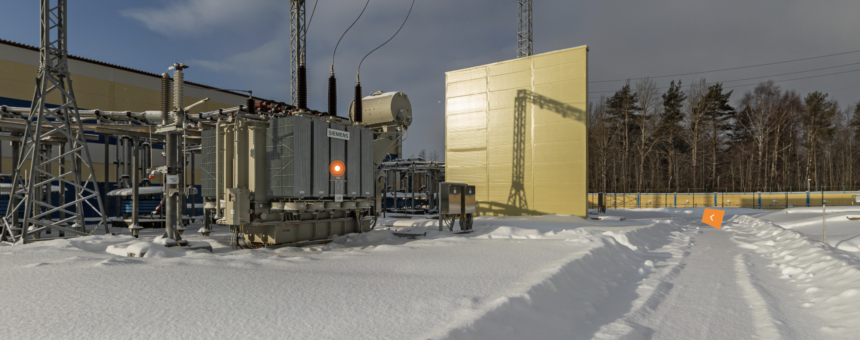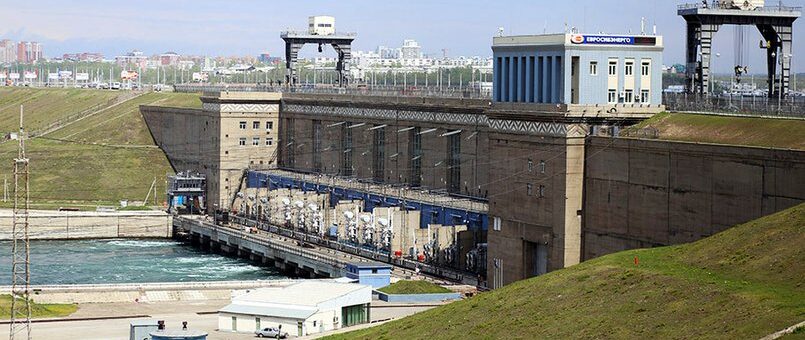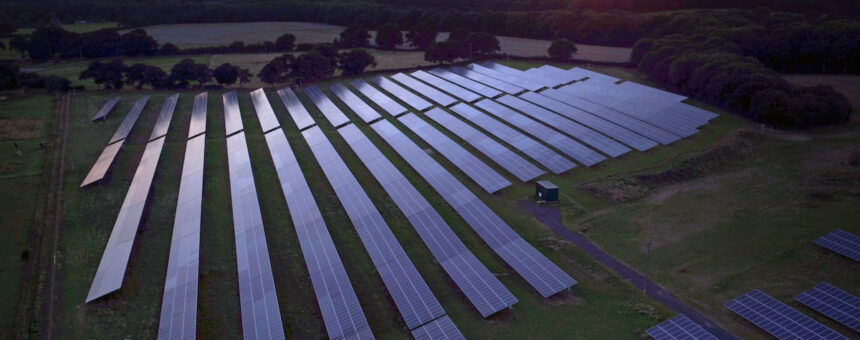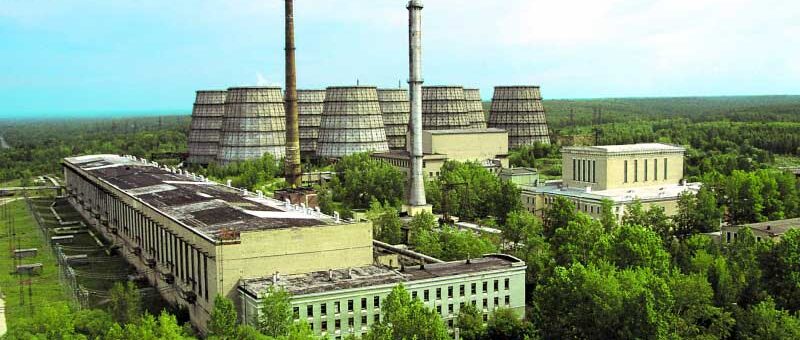Is it possible to mine on solar panels, thermonuclear energy and electricity from garbage?

The basis of any data center is electricity. Hangars or containers with a cooling system, miners with large capacities, fire safety and cybersecurity systems — all this cannot exist without a stable supply of energy in a large amount. We discussed the present and future of energy with Andrey Kosko, an expert in the field of energy and the author of discourses. He spoke about
- what the energy portrait of the company is
- how continuous power supply is provided
- what is the energy structure of Russia
- what options for obtaining energy will appear in the near future.
— Let’s start with what is behind the term “energy portrait”.
— When we talk about the company, we are talking about the structure of energy consumption. This is a characteristic of all the energy that the company has consumed during the year. Portrait is a rather elegant word, but accurate. Although the term “structure” is more common in the technical and scientific literature.

— A data center isn’t an ordinary company in this context. After all, it consumes a huge amount of energy. What can we say about the energy portrait of such a place?
— It would be wrong to say that the data center has a radically distinctive consumption structure. However, it’s worth mentioning that data centers consume mainly electric power. They don’t use gasoline, coal, or natural gas on a large scale. The final energy resource for them is electricity. And the question is from what resources it can be obtained.
— And what options do Russian data centers have?
— Most often, after all, data centers are connected to a centralized network. If we draw an analogy, then this is a pool into which the electricity produced by all sources of the region or country falls. It can be coal, gas, nuclear reactions, renewable resources.
In rare cases, although this is quite acceptable, there may be its own energy source, which is provided by the data center. As a rule, it is a backup, carrying only the reliability factor.
However, most often the data center consumes electricity from a centralized network. And no one knows what kind of energy there is. More precisely, exactly the same as in the country. So there is no specific portrait of the data center, it depends on what kind of energy structure in the country itself. If the country mainly consumes coal, then the data center will also have electricity generated by burning this material.

— Most data centers are located in the north-east of Russia. Irkutsk stands out especially. What are the ways of obtaining energy in this region?
— There will be gas stations mainly in this area. Of course, there will be a hydroelectric power station, because in Russia as a whole, 20% of electricity comes from hydroelectric power plants. In addition, these will be coal plants, because their input is no less significant, about 15-20% across the country. And, of course, nuclear power, albeit on a slightly smaller scale. But there will be almost no wind and solar stations, literally 1-2% of all options for obtaining electricity.
— You mentioned that data centers can build their own substations for reliability. What other options are there to ensure continuous power supply?
— I think it’s worth starting with such a concept as the category of power supply. Any object, depending on its functions, is important to society, the state, and the investor to varying degrees.
Let’s take a warehouse as an example. All the power facilities on it are a light bulb and a pair of fans. And no one will really feel the day-lasting power outage there. It’s even redundant to supply such an object with some reserve capacities. So, its energy supply category is the lowest.
And now let’s take the hospital as an example. The power supply shouldn’t be turned off for a second, since the artificial lung ventilation devices and others are needed by patients non-stop. Accordingly, one power supply channel won’t be enough, and they must be from at least two independent sources: if one turns off, the second must necessarily work. In this case, the channels can be from a centralized network. It’s just that the primary sources, the power stations, should be independent. But in case both are disconnected, although this is extremely rare, there should still be an absolutely independent source of energy supply, which is owned by the facility. Usually that’s a diesel generator. If the power supply from the centralized network is suddenly turned off, then it automatically turns on and is supported by a fuel reserve.
There are no other ways for the consumer to ensure uninterrupted power supply. A centralized network can strengthen power line supports for reliability or connect new equipment. But the consumer can simply adhere to one rule: the more sources of electricity you have connected, the higher your reliability is.
— The question of the environmental friendliness of energy is becoming more and more frequent. And many data centers are trying to provide themselves with green energy in order to become more attractive to the client. What types of energy are we talking about in such cases?
— Let’s start with what we consider green energy. There are three gradations of electricity in the world that are used in its description.The first graduation is renewable and non—renewable.
The energy of the sun, wind, the movement of water in rivers and during tides is considered renewable, because for a long period of time these resources are inexhaustible. Non-renewable includes everything that needs to be dug up: coal, gas, oil. As a rule, they are also combustible, they are burned.

The exception here is biomass energy. Formally, itэs renewable, because even if the trees aren’t planted, they will grow. But the material is combustible, which means there is a question of environmental friendliness. In principle, the energy obtained by burning wood doesn’t greatly harm the environment, because the process of rotting differs from the combustion process only in speed. So, biomass is less scary than coal and gas. Although we burn gas in everyday life without consequences, the story is quite different on an industrial scale. In the process, greenhouse gasses are released, which increase the rate of global warming.
Nuclear power remained. It is incorrect to classify it as renewable, because it will be so only when nuclear waste is recycled. But this almost never happens. So, in theory, it can be renewable, but in practice — not yet.
The next gradation is traditional and non—traditional. The most unreasonable terminology from a scientific point of view. At least because wind and solar energy are considered unconventional, although windmills were used a long time ago. But nuclear energy, which is the youngest, belongs to the traditional ones.
And the third gradation is alternative or non—alternative. The word alternative here implies a dichotomy. There is gas, coal and oil, and there is an alternative to them: wind and sun. In fact, this isn’t correct enough as they aren’t fully an alternative. After all, the sun and wind are electric energy. And if you have a diesel moped, you won’t fill it with electric energy, you will have to replace the engine with an electric one.
— And which of these types of energy are considered conditionally pure?
— Here as well everything isn’t so simple.
The first parameter is whether the material is burned or not, and if it is, how harmful it is. Coal, gas and oil are burned, producing pollutants and releasing gasses that enhance the greenhouse effect. This is so harmful that the only international agreement that currently operates in the field of climate on a global scale is the Paris Climate Agreement, also known as the UN Framework Convention.
Renewable sources are harmless in this concept. There are, of course, nuances that harmful substances are also released during energy production, but their amount is incomparably less compared to those that are emitted during the combustion of gas, oil and coal.
Intermediate sources are hydro and nuclear power. During the operation of a nuclear power plant nothing burns, but there’s nuclear waste that needs to be stored somewhere. The problem is technically easy to solve, but there are a lot of political prerequisites and fears of society, which suggests that we cannot attribute atomic processes to a pure source.
In the European Union, however, this source is recognized as clean, with one caveat: in the future you need to switch to the sun and wind. This is EU policy, with the exception of Italy and Germany. So nuclear power is developing, it’s wrong to say that it’s fading. There is the USA, China, Russia, there are developing countries like Pakistan, Iran, Turkey, in which no one is going to abandon nuclear energy at all.
Coming back to Russia and what energy sources are used there. Exactly all those mentioned above, except renewable ones like the sun and wind. Here very little solar and wind energy is used in general. But as for the one that is obtained from coal, gas, nuclear processes and hydroelectric power plants, it’s in approximately equal proportions.

— And what are the prospects in the state for increasing the percentage of energy received from solar panels and windmills?
— There are no problems in Russia with the use of renewable energy sources, and today it’s quite economical. The problem is that this requires political will. Why use the sun and wind if there is relatively cheap gas?
The areas where there is the most wind in Russia, as in general and throughout the world, are the coastal areas. The wind blows where sea temperature differs. The thing is that the entire coastline is predominantly northern. And there the wind blows not only in gusts, but also far from the main regions of consumption.
There is potentially more wind energy in Russia than in the whole world. But it’s distant and transmitted via a power line; it makes no sense to submit it from so far away when there’s cheap oil and gas right at the place of energy consumption. Plus, the main types of renewable energy equipment aren’t Russian-made, and the transition to such equipment isn’t fast. So, renewable sources will develop, but nobody can say how fast.
Most people are sure that in regions such as central Siberia, solar panels cannot be installed. Although this is one of the most successful places for them: it’s an area with a continental climate, which means there are few clouds and a lot of sun. In winter, there will be much less sun, but given that it’s cold out there and the solar panels won’t overheat, their efficiency will be much higher.
— It seems we have discussed all the main ways of obtaining energy. But you’ve never mentioned recycling. How are things going with this type?
— It’s a very difficult question where to include the garbage. In theory, that’s a renewable source. It isn’t natural, but every year its quantity is increasing. So, approaching the issue technocratically, it’s very renewable. And in fact, in many countries, garbage refers to this. And who will forbid it? The state declares it renewable, introduces benefits — and the investor goes there for the benefit. Such precedents exist.
It is very important to note that the economic alternative is always above. Gas prices in Russia are directive: they are set and don’t change for a long time. In Europe, they are market-based, fluctuating. So, if you have high gas prices, as it has been in Europe for the last couple of years, then almost everything will be economically feasible.
This is the same thing that we discussed in the case of data centers, about energy security. The more different sources of electricity you have, the better it is. Suddenly there is no gas, the Nord Stream stops working, and you have a lot of garbage. Although it’s advisable to avoid waste in general, and only then recycle it.
If we talk about options for recycling garbage so as to get energy from it, they certainly exist. But it’s more like some kind of startup that provides electricity by-the-way. Although in the process of fermentation, for example, gasses are produced that aren’t its direct process. And if you mix certain animal waste with certain bacteria, then methane will be released during the fermentation process, which is obtained in the case of natural gas, but without tearing the subsoil. On the contrary, it will be obtained by natural recycling of waste that would otherwise pollute the environment.

— All of the above applies to very real sources of energy. However, the sphere is developing, something new should appear in it. For example, recent reports of oil from algae and wireless electricity from space. What can you say about these cases? Are they scalable?
— This is definitely a private story. In the near future, such options will be used localized, and possibly even for marketing purposes. But the most relevant type that can affect our energy appearance in the next 30 years is thermonuclear energy.
The classic type of atomic energy is nuclear, which we have been using for more than 50 years. If heavy uranium is bombarded with small particles, it decays. And in this process, thermal energy is released, which can be used to generate steam, rotate the turbine and receive electricity.
What is thermonuclear energy? It sounds similar, but is the exact opposite process. With thermonuclear energy, it’s not the decay of an element that occurs, but the combination of two lighter ones into one heavier. Exactly the same processes occur on the Sun and any other star. At a colossally high temperature, hundreds of millions of degrees, two elements can glare at each other, despite the fact that in general the atoms repel, and become one. And with this interaction, much more energy is released than with nuclear decay. But there are no materials on the Earth that would allow this temperature to be reached. We need to come up with ways that will keep such a temperature, but at the same time be immaterial. In general, they are — this is an electromagnetic field. But the reactions are still unstable.
Despite this, there are experimental samples that may well become industrial. The problem is that today the energy received at the output is often less than the energy spent at the input. But it’s potentially a colossal source of energy: nothing burns and there is no need to extract fuel. For a thermonuclear reaction, you just need to isolate heavy water. But it’s much more difficult to organize the synthesis process.
If we talk about the prospects that are really capable of changing our energy future, then it’s thermonuclear fusion. It doesn’t seem like the near future to me. Although Microsoft recently signed a contract with one startup, promising that in 2028 there will be the first industrial energy produced in this way. An ambitious task, but we will wait.

